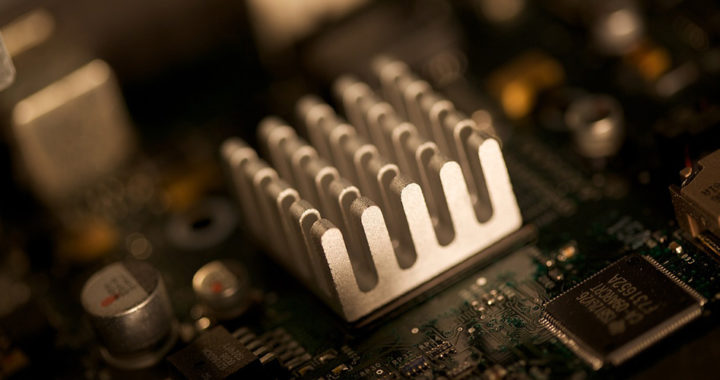Computer processors such as CPUs and GPUs, including system-on-a-chip or any other heat sources within an electronics system require an effective and efficient cooling system to prevent them from overheating and incurring thermal damages. Nevertheless, there are two common methods of dissipating heat from a heat source based on the principles of liquid cooling: through the use of either a conventional heat pipes or vapor chamber cooling method.
The working principle behind heat pipes and vapor chambers are fundamentally similar. Both work by moving heat away from the heat source through a fluid that converts into gas when heated and condenses back into its liquid form as it cools.
Note that heat pipes use separate fluid-containing tubes or pipes. They funnel the condensed fluid back to the bottom using capillarity. On the other hand, vapor chambers use a different design approach. Instead of separate pipes, they use their entire body to cool the heat source.
The Pros: Advantages and Benefits of Vapor Chamber Cooling
One of the primary advantages of a vapor chamber cooling system is that it occupies a smaller space than heat pipes. The flat structure of vapor chambers enables them to transfer heat effectively through a relatively small amount of space.
Take note that laptops and other mobile devices such as smartphones and tablets have limited and cramped space. Engineers need to integrate a cooling system within the hardware without sacrificing the compactness and mobility of these devices.
Vapor chambers are suitable for restricted hardware design situation. Because they do an efficient job of spreading heat, particularly the traditional two-piece variants, vapor chambers can be made into any shape or embossed and placed in direct contact with a heat source such as a CPU or a dedicated GPU.
Remember that thermal transfer efficiency is another advantage of a vapor chamber cooling system. It can dissipate heat up to 2000 watts of heat in an area of about four square-centimeter. On the other hand, the efficiency of heat pipes depends on the pipe length, the presence of airflow, and ambient temperature.
More specific beneficial applications of vapor chambers based on their key advantages include situations involving high power densities of 50 watts per square-centimeter and constrained spaces in the height or z-direction, as well as in scenarios that require reducing hot spots or in which performance is an important consideration.
The Cons: Disadvantages and Limitations of Vapor Chamber Cooling
Of course, there are contentions against vapor chambers. A major disadvantage of a vapor chamber cooling system is cost. The cost of this system sometimes limits its application. Computers or any other electronic systems that do not need a massive cooling boost would run perfectly with heat pipes.
Design flexibility can also be an issue even though vapor chambers are ideal for limited and cramped spaces. Pipes are bendable and as such, heat pipes are the default choice for situations that require moving heat away from the heat source and to a remote condenser.
Furthermore, heat pipes are the usual choice when working around crowded components, especially if the entire system requires moving heat from a source and to a remote area with a distance of greater than 40 to 50 millimeters. The bendability of pipes means that they can be wrapped around different components.
Take note that vapor chambers have little design flexibility in the z-direction because they are usually a single-piece system. A u-shape design is feasible, but the complications involved make vapor chambers impractical from a cost and manufacturing perspective.
A Note on the Pros and Cons, As Well as Applications and Limitations
Both are sub-types of liquid cooling. Hence, they share unique advantages and disadvantages when compared agains traditional air or fan-based cooling. However, it is important to take note of the fact that heat pipes move heat while vapor chambers spread it. The general rule is that heat pipes should be used when moving heat away from the source and vapor chambers when spreading it.
When choosing between the two cooling methods, it is essential to first analyze the cooling demand of a computer or other electronic systems before buying or designing and implementing a specific cooling system. Remember that cooling is important because overheating can damage electronic components and thus, affect the performance of a particular device or entire system.
Vapor chambers are considerably more efficient than heat pipes, especially when it comes to spreading heat. However, cost implications make them unsuitable for situations centered on low cooling demand or low-power performance. Still, higher cooling demand would make heat pipes cost ineffective because of the needed complicated system configuration.

